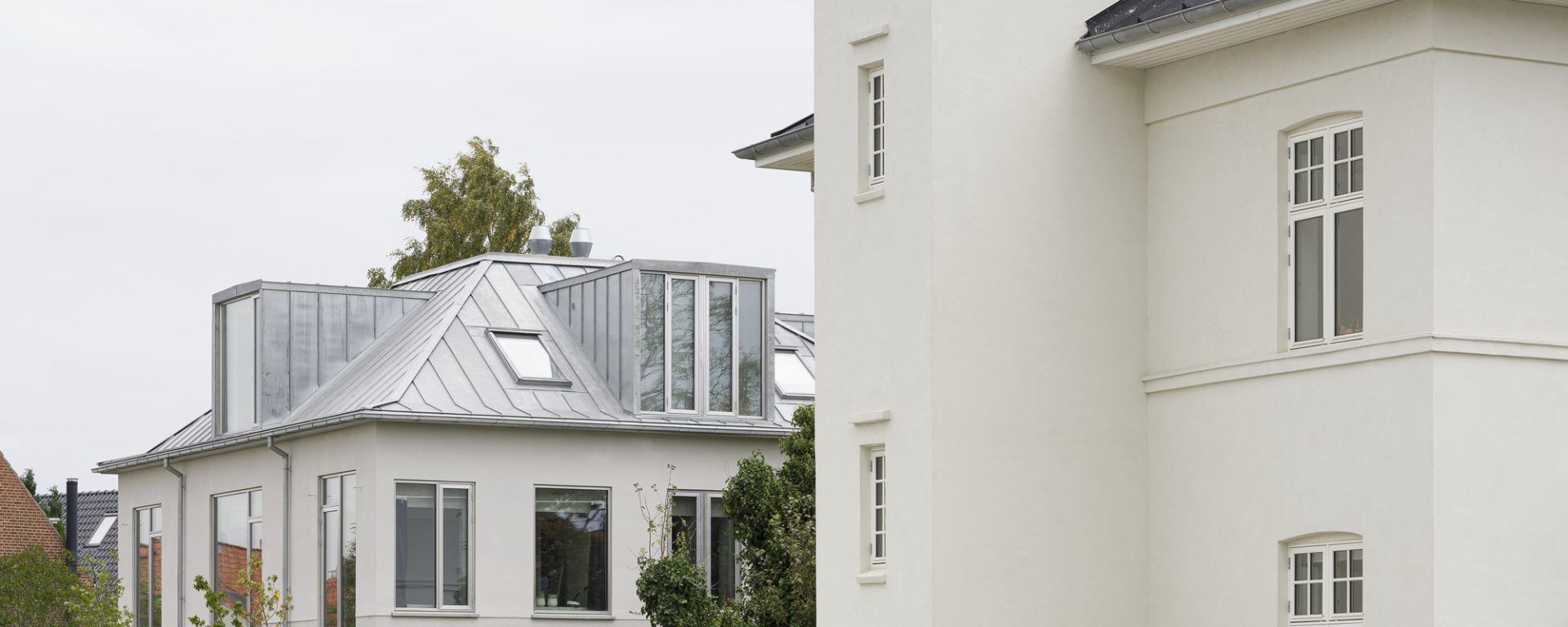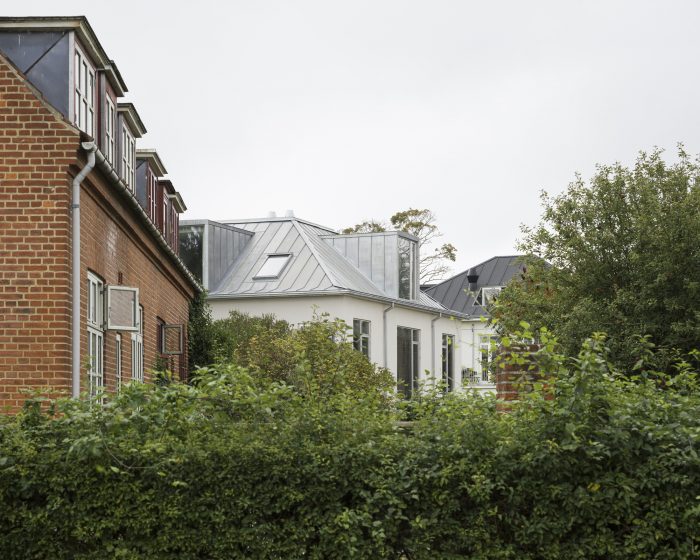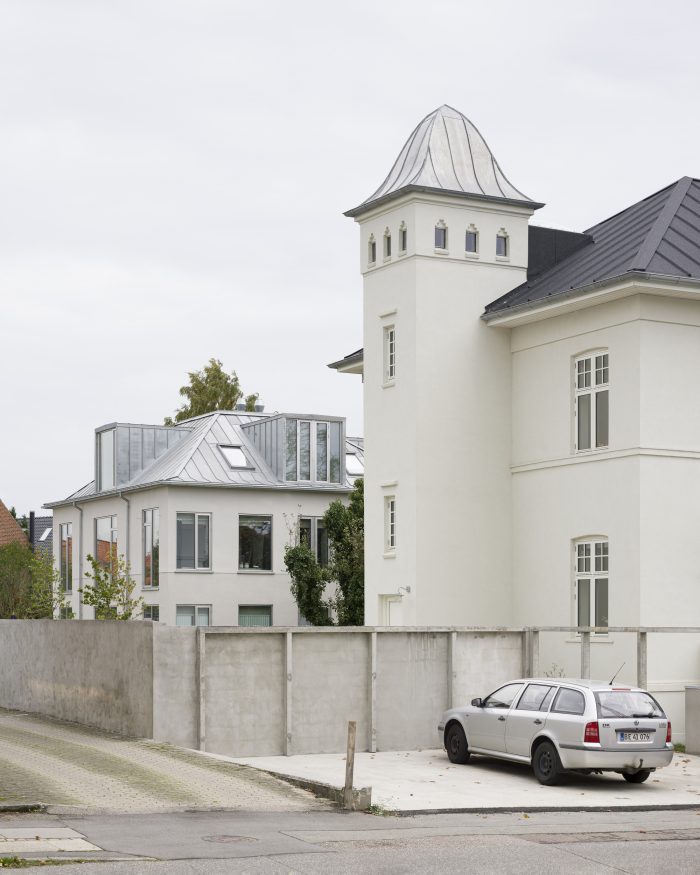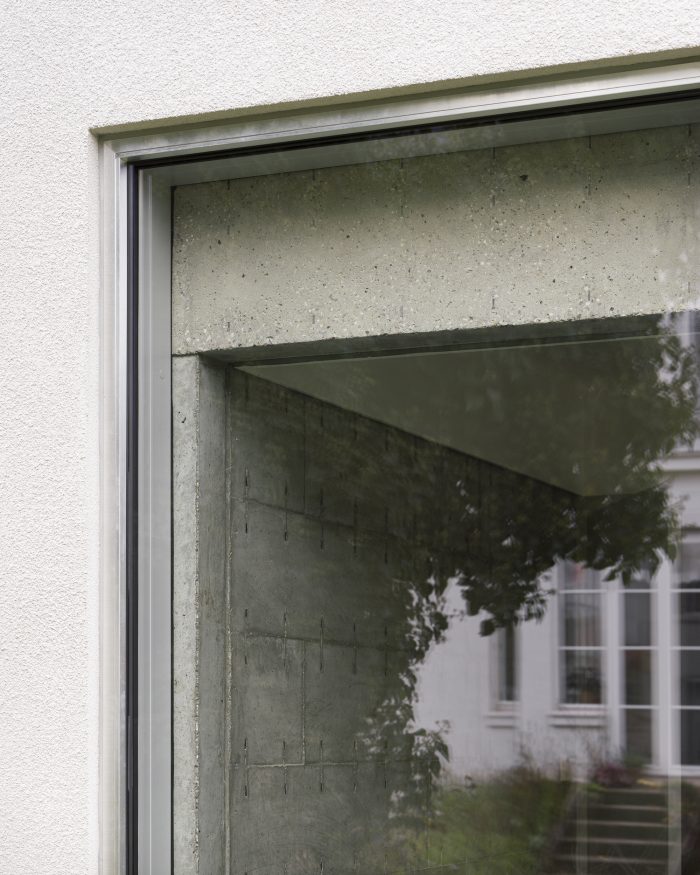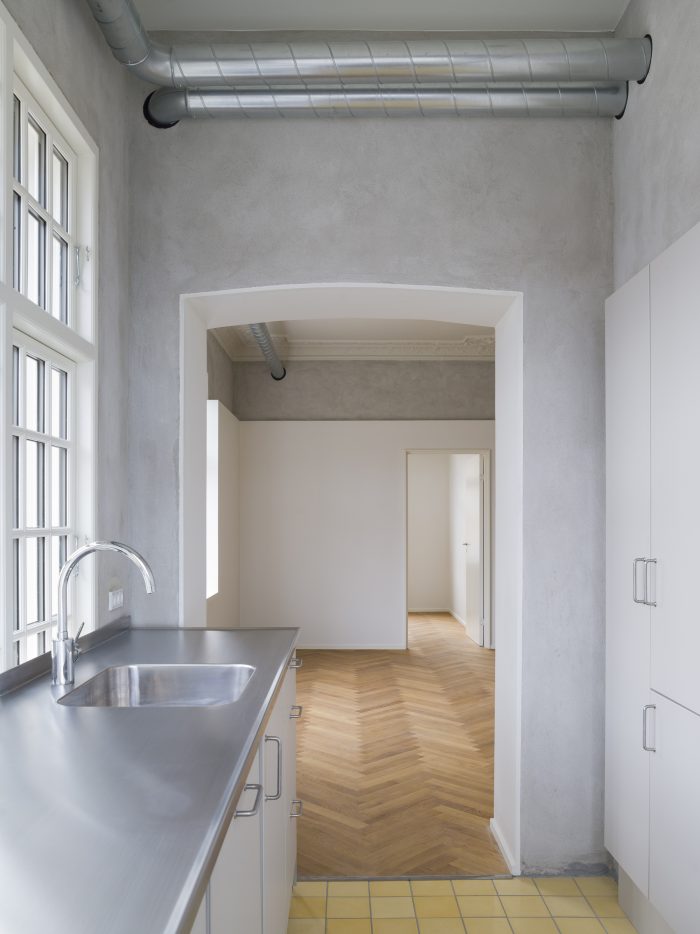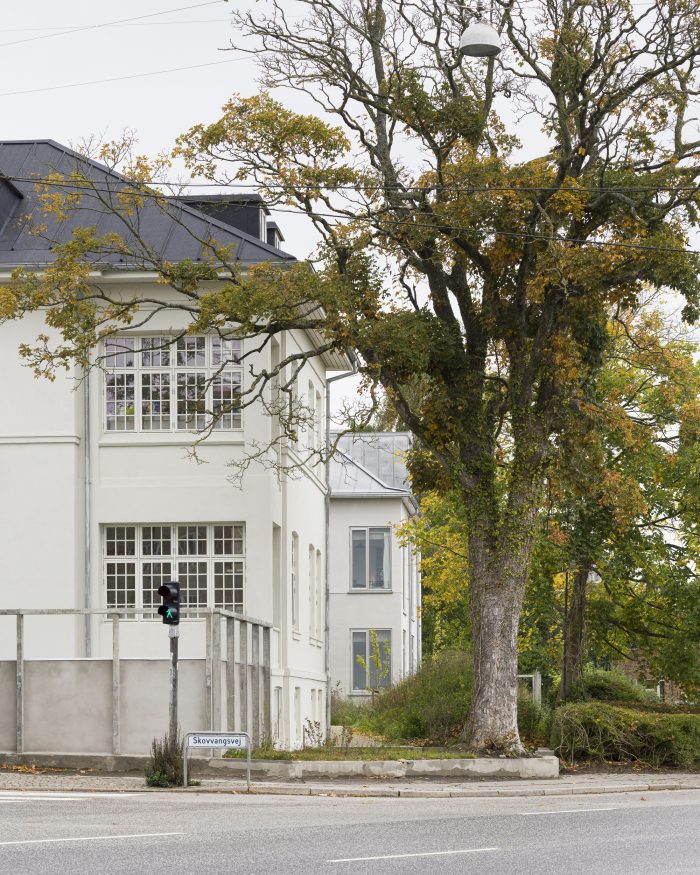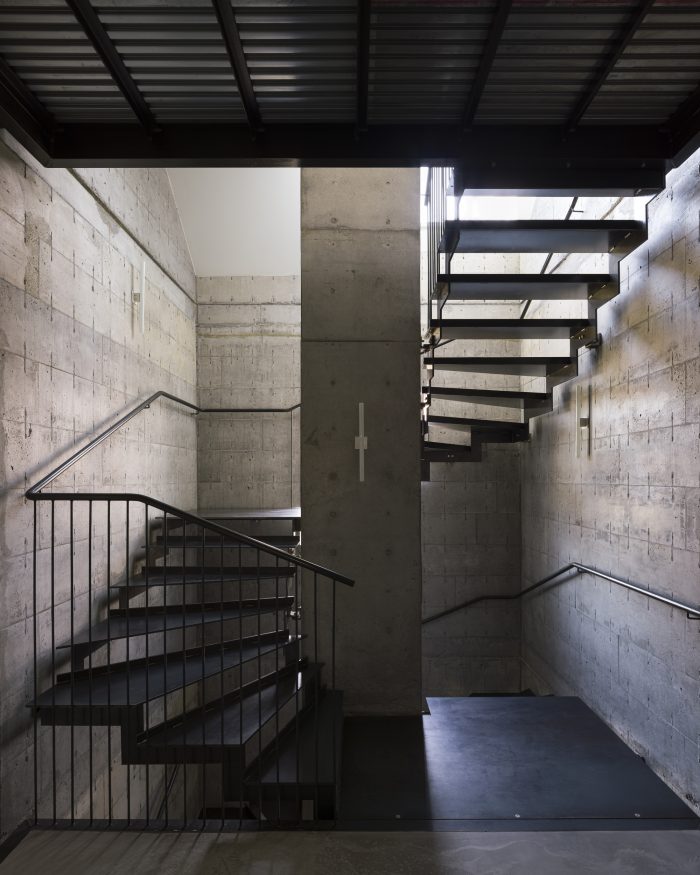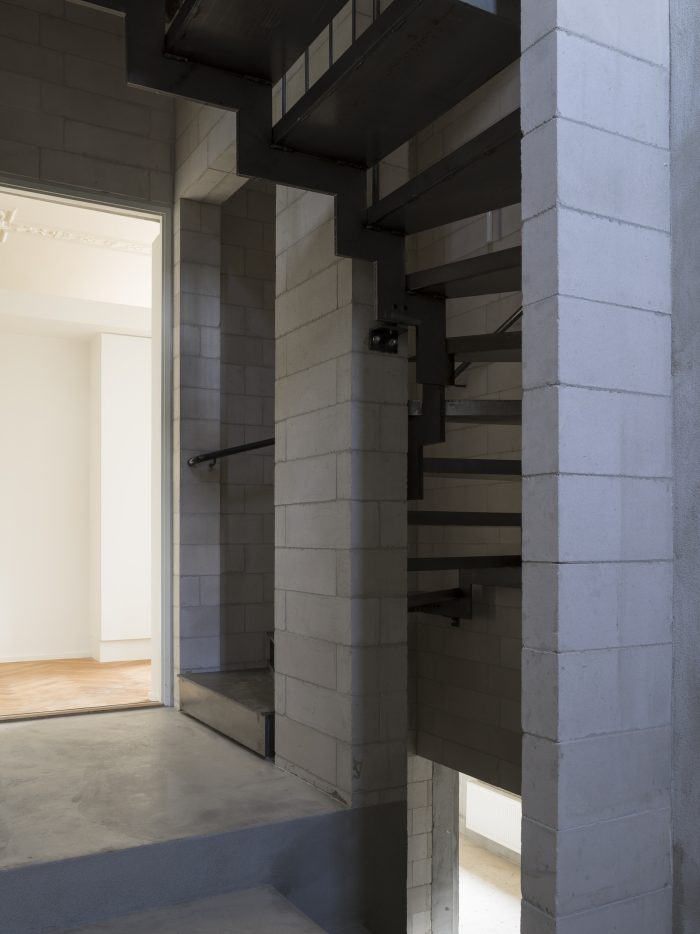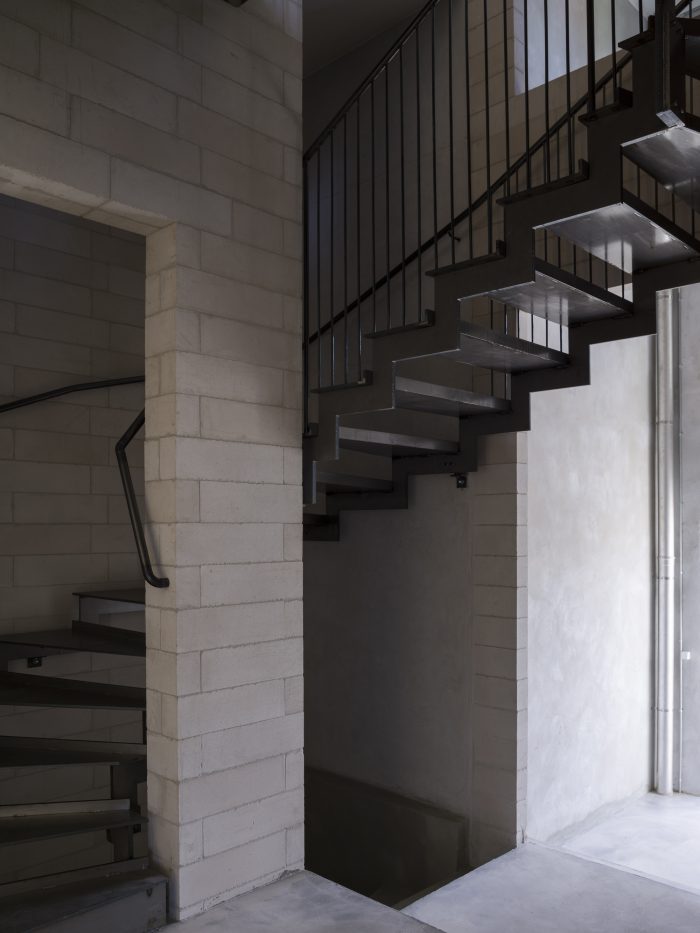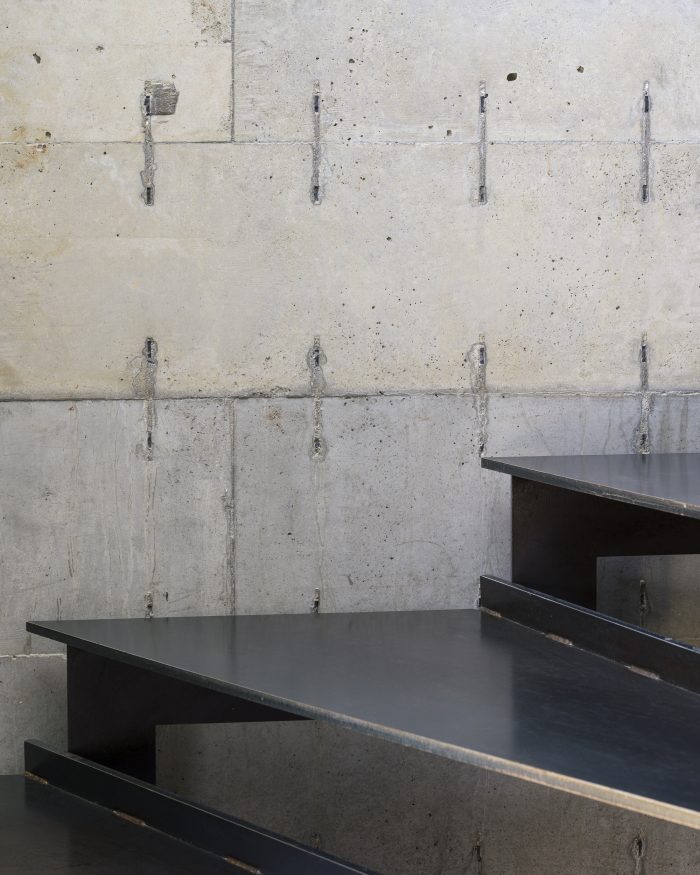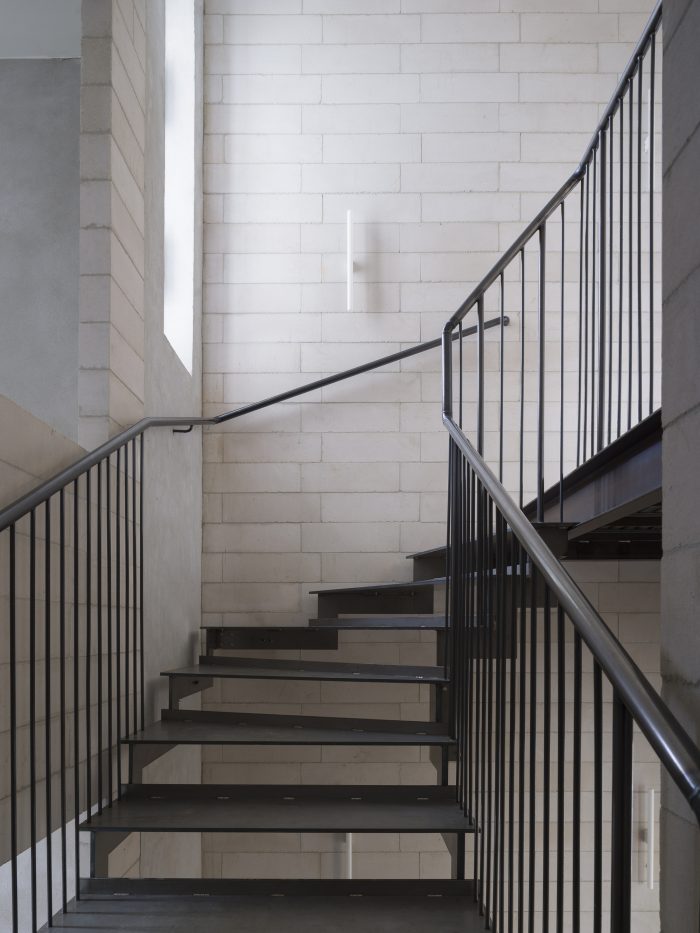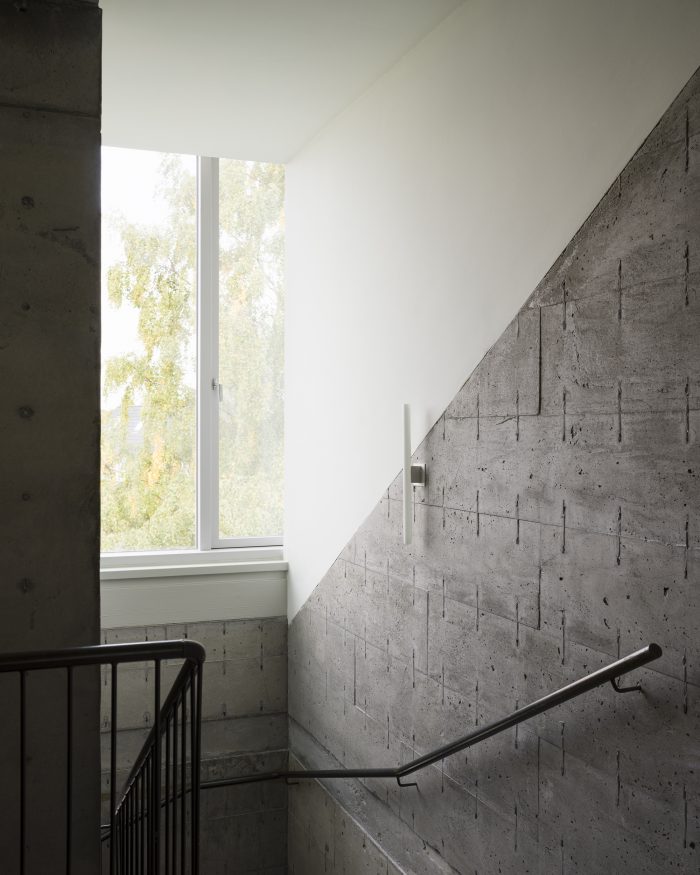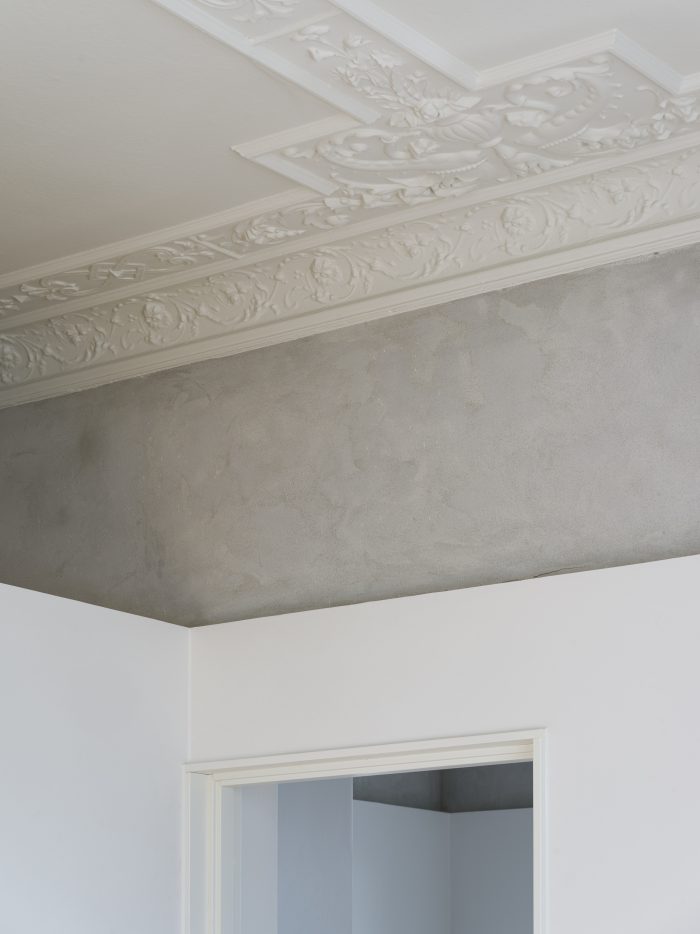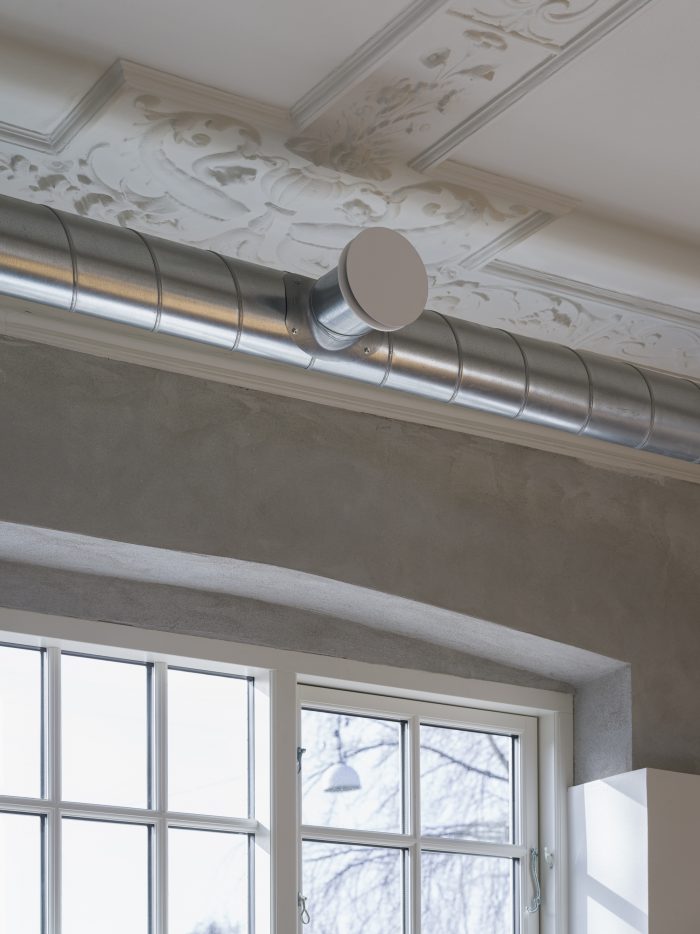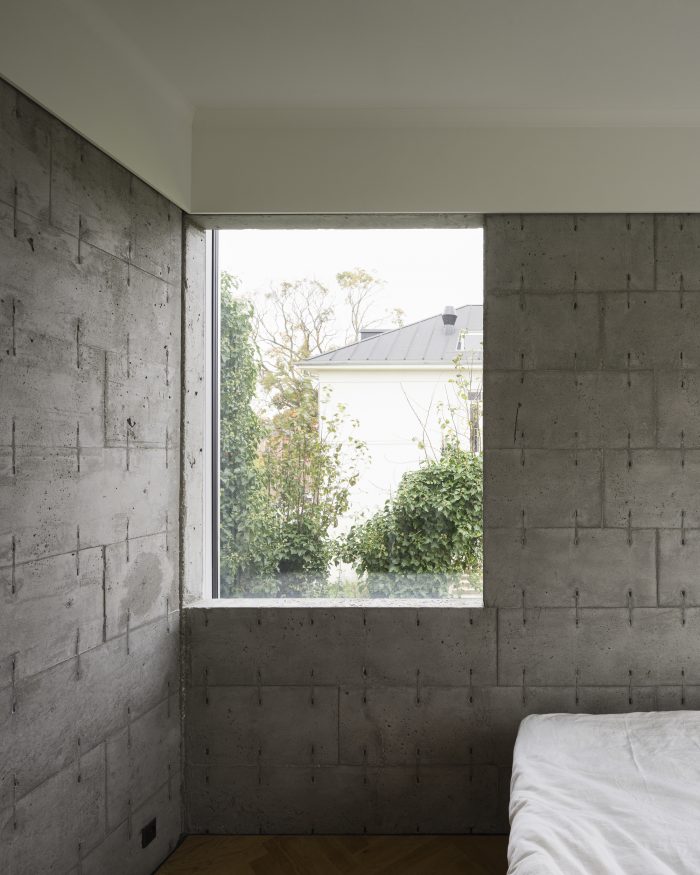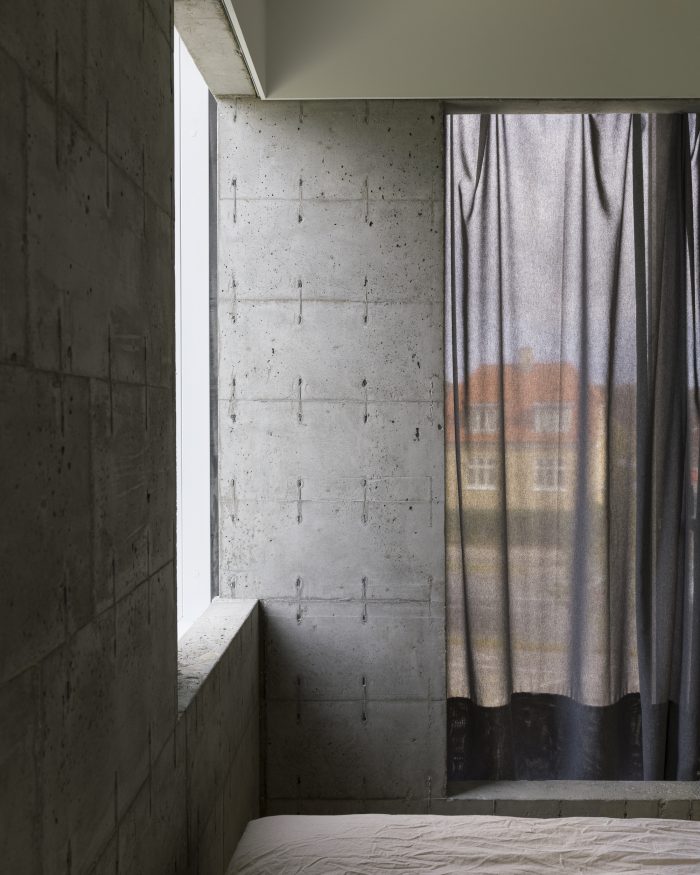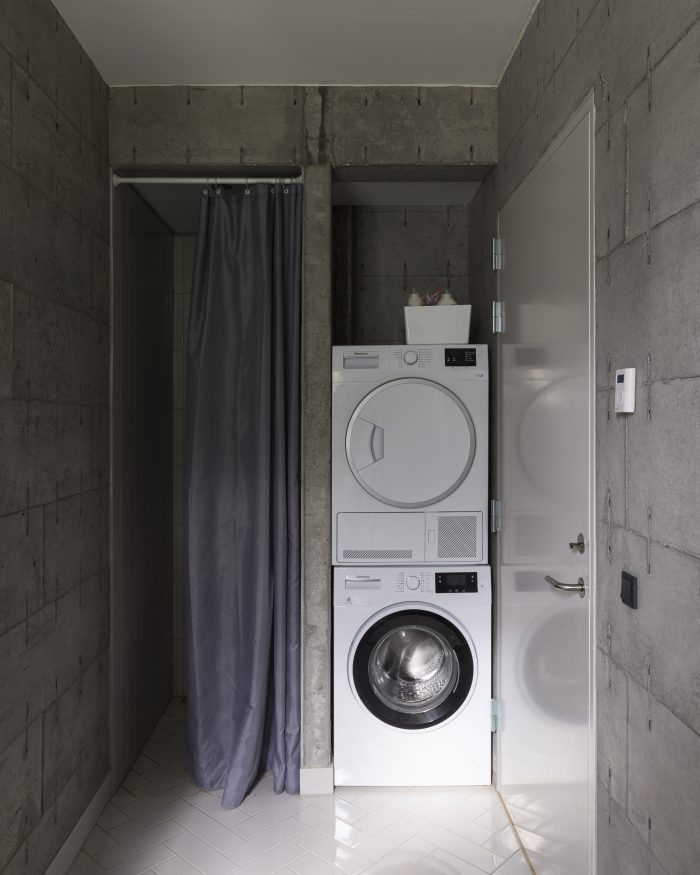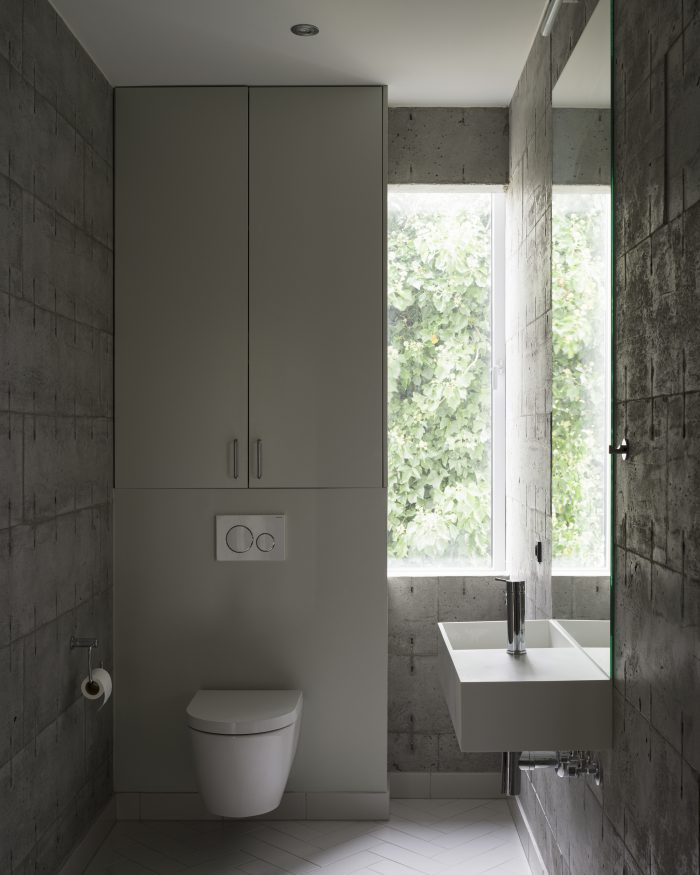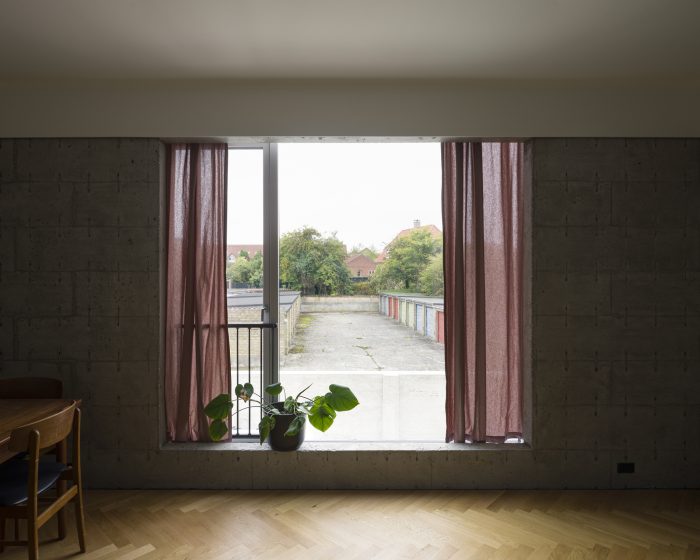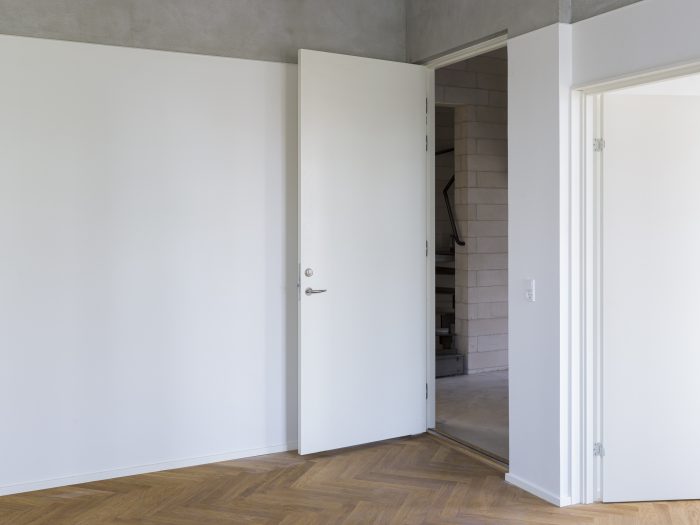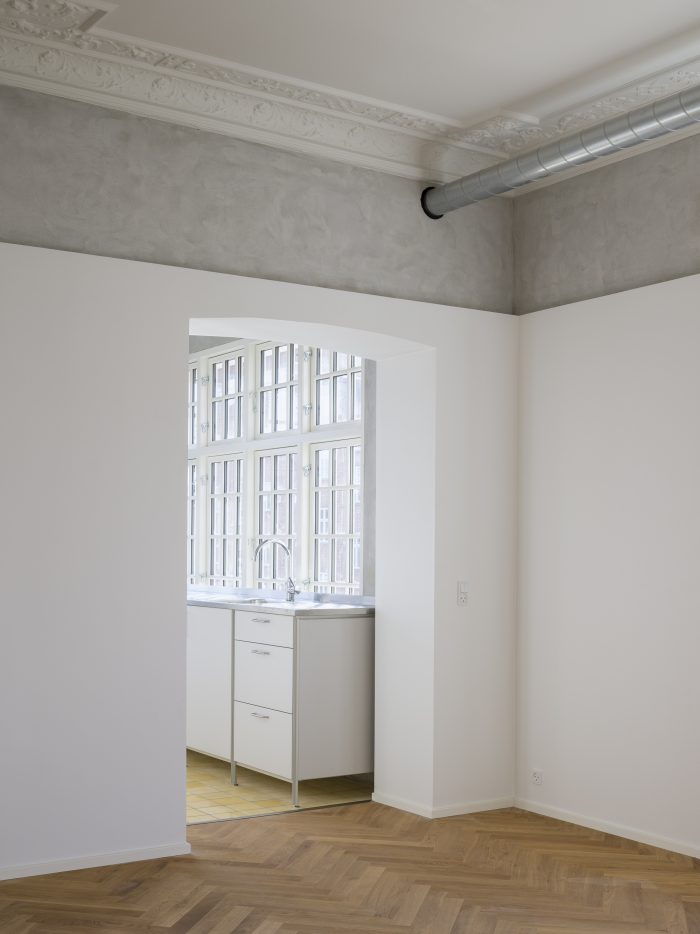在奥胡斯市中心的入口处,在郊区住宅和城市街区之间的门槛上,坐落着兰德鲁夫特别墅–一座建于1897年的庄严的豪宅,参考了意大利文艺复兴时期的建筑。兰德鲁夫特别墅的名字,在丹麦语中是 “乡村空气别墅 “的意思,起源于房子远离奥胡斯市中心的时候。经过一百多年的城市发展,这座曾经骄傲的豪宅已经衰落成一个破旧的建筑异类–一个过去时代的最后堡垒。该项目重新激活了一个过时的建筑类型,它在美学上、功能上和人口上都已经脱离了周围的环境。
At the gateway to central Aarhus, on the threshold between suburban residential housing and urban city blocks, lies Villa Landluft – a stately mansion built in 1897 with references to Italian Renaissance architecture. The name Villa Landluft, Danish for ‘Villa Country Air’, originates from a time when the house was situated far outside of central Aarhus. After more than a hundred years of urban development, this once proud mansion had declined into a dilapidated architectural alien – a last remaining bastion of a bygone era. The project reactivates an outdated building typology, which had become detached from its surroundings both aesthetically, functionally, and demographically.
兰德鲁夫特别墅通过深刻的改造和双胞胎别墅兰德鲁夫特二号的建造而恢复了活力–共同形成了一个连贯的项目,时代和类型融合成一个不伤感的拼贴画。它是在两座房子之间的建筑相互作用以及与周围城市的新关联中创造的。一个私人花园从意大利文艺复兴时期的花园中汲取灵感,被布置在原来的兰德鲁夫特别墅和兰德鲁夫特二期别墅之间。该地块以花架为界,既融合又模糊了私人财产和城市生活之间的界限。同样,该地块的东南角是开放的,并被慷慨地变成了一个小规模的公共空间,融合了地主和城市。
Villa Landluft is revived through a profound transformation and the construction of a twin, Villa Landluft II – together forming a coherent project where times and typologies merge into an unsentimental collage. It is created within an architectural interplay between the two houses as well as a new correlation with the surrounding city. A private garden that draws inspiration from the Italian Renaissance garden, is laid out between the original Villa Landluft and Villa Landluft II. The plot is bordered by a trellis that both blends and blurs the boundary between private property and city life. Likewise, the southeast corner of the plot is open and generously turned into a small-scale public space that merges cadaster and city.
现有的大宅有许多加建的痕迹,这些痕迹削弱了它的原始特征。这些被剥去的痕迹使得古典的构图重新出现–白色渲染的外墙,带有优雅的门楣,明显的浮雕,以及尖锐的檐线。在不复制现有元素的情况下,内部以一种展示当代建筑技术的方式回归到庄严的品质。人字形地板被保留了下来,而曾经破旧的墙壁则被粗略地抹上了石膏板隔断,并进行了保温。
The existing mansion bore traces of numerous additions which had diminished its original character. These are peeled away making the classical compositions reappear – a white rendered façade with elegant friezes, distinct reliefs, and a sharp cornice line. Without replicating existing elements, the interior points back to stately qualities in a manner that demonstrates contemporary construction techniques. The herringbone flooring is maintained, while the once threadbare walls are coarsely plastered and insulated with gypsum board partitions.
在楼梯间,硅酸钙砖重新诠释了古典的砖石结构,而楼梯本身是由激光切割的钢板制成的,反映了当代工艺的潜力。中间的湿润的房间–就像绝缘的隔板–没有利用整个天花板的高度。这使得灰泥可以显示出房间的原始尺寸,作为兰德鲁夫特别墅过去仪式感的见证–与镀锌通风管道一起务实地放置。
In the stairwell, calcium silicate blocks reinterpret the classical masonry while the stairway itself is made from laser-cut steel plates reflecting the contemporary potentials of craft. The interposed wet rooms – like the insulating partitions – do not take advantage of the entire ceiling height. This allows the stucco to show the original dimensions of the rooms as a testimony to Villa Landluft’s ceremonious past – placed pragmatically alongside galvanized ventilation pipes.
兰德鲁夫特别墅II反映了兰德鲁夫特别墅作为豪宅的现代诠释。其比例、雨棚的对称性、窗户的节奏、独特的檐口和微妙的门楣都参考了兰德鲁夫特别墅的建筑。在内部,现浇混凝土结构框架似乎是暴露的,使模板的印记作为一个感性的元素具体化。原始的混凝土表面揭示了建筑的构造,并传达了房屋的建造过程。
Villa Landluft II mirrors Villa Landluft as a contemporary interpretation of a mansion. The proportions, the symmetry of the dormers, the rhythm of the windows, the distinctive cornice, and the subtle frieze all refer to Villa Landluft’s architecture. Inside, the cast-in-place concrete structural framework appears exposed, making the formwork’s imprint materialize as a sensuous element. The raw concrete surfaces reveal the tectonics of the building and convey the construction of the house.
每层楼有两个三室一厅的公寓,在一条中轴线上相互映衬。在每个房间里,Landluft别墅的灰泥被巧妙地重新诠释为一个功能性的盒式系统,其中包含一个用于窗帘和墙面装饰的薄滑动轨道。窗户被安装在混凝土框架之外,当从内部看时,使开口看起来像混凝土平面上的尖锐切口。它们揭示了穿过建筑外墙的部分,并暴露了Landluft II别墅的解剖结构。
Each floor has two three-room apartments that mirror each other across a central axis. In each room, Villa Landluft’s stucco is subtly reinterpreted as a functional cassette system, which contains a thin sliding rail for curtains and wall decoration. The windows are mounted outside the concrete framework, making the openings appear as sharp cuts in the concrete planes when viewed from the inside. They reveal sections through the building’s exterior walls and expose the anatomy of Villa Landluft II.
对历史别墅的重新激活是通过将当代建筑部件和技术与对该地区的类型、质量和生活条件的理解相结合而进行的。在一个连贯的项目中,Landluft别墅和Landluft二号别墅毫无感情地与我们的建筑遗产进行了对话。因此,从历史主义别墅到当代环境的过渡得到了调解,地籍作为城市结构的一部分得到了恢复。
The re-activation of the historic villa takes place by integrating contemporary building components and techniques in an understanding of the area’s typologies, qualities, and living conditions. In one coherent project, Villa Landluft and Villa Landluft II unsentimentally enter a dialogue with and about our built heritage. In consequence, the transition from the historicist villa to the contemporary context is mediated, and the cadaster is revived as part of the urban fabric.
Architects: Kim Lenschow, pihlmann architects
Area : 386 m²
Year : 2021
Photographs :Hampus Berndtson
City : Aarhus
Country : Denmark

